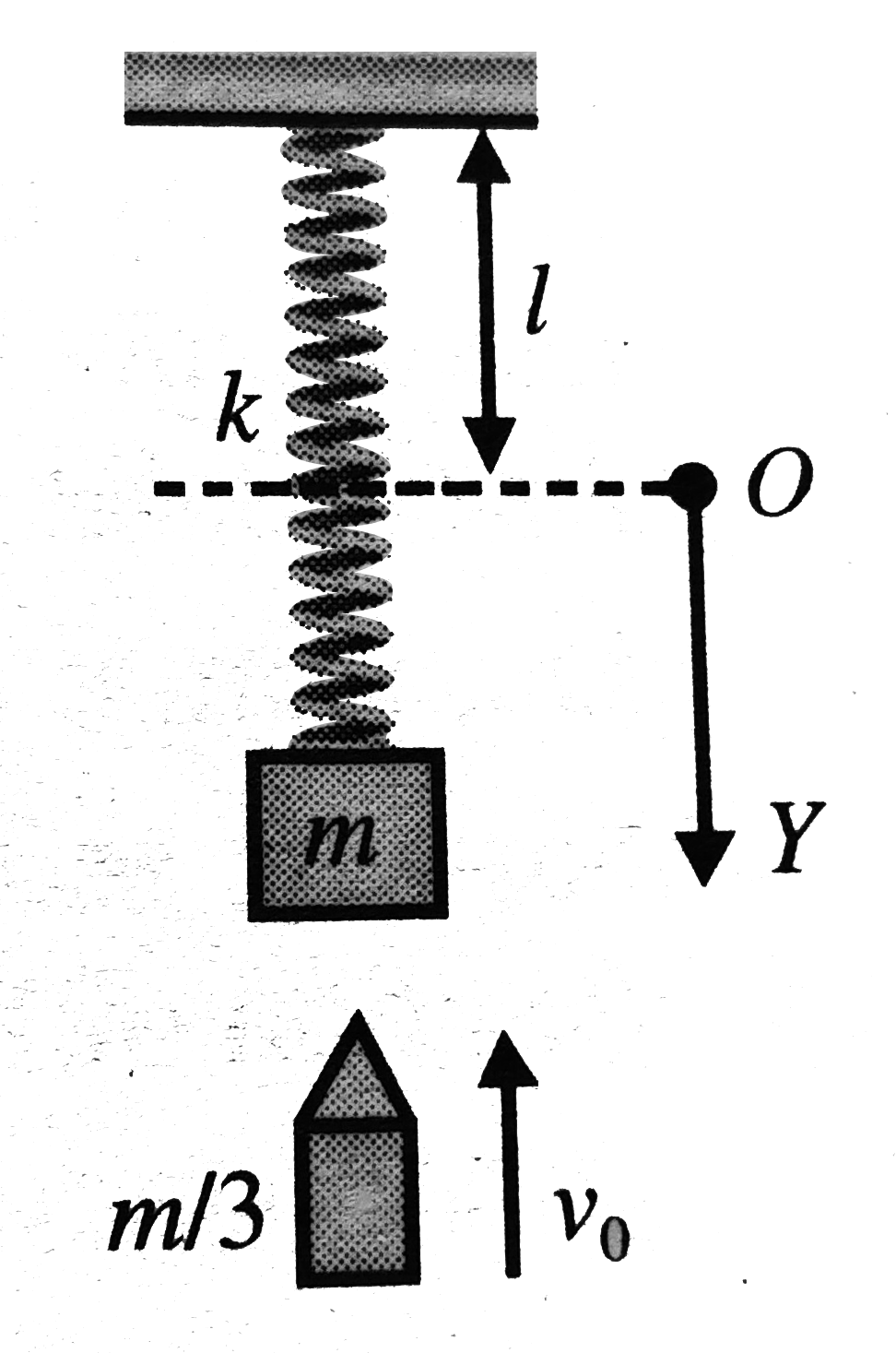A bullet of mass 50 is moving with a velocity of 500 ms−1 . It penetrates 10 cm into a still target and comes to rest Calculate (a) the kinetic energy possessed by the bullel and (b) the average retarding force offered by the target.
To solve the problem step by step, we will calculate (a) the kinetic energy possessed by the bullet and (b) the average retarding force offered by the target.
1. Formula for Kinetic Energy (KE):
KE=12mu2
2. Substituting the values:
KE=12×0.05kg×(500m/s)2
3. Calculating u2:
(500m/s)2=250000m2/s2
4. Calculating KE:
KE=12×0.05×250000=0.025×250000=6250Joules
Part (b): Calculate the Average Retarding Force
1. Use the equation of motion:
v2−u2=2as
where a is the acceleration.
2. Substituting the known values:
02−(500)2=2a(0.1)
3. Calculating u2:
0−250000=2a(0.1)
4. Rearranging to find acceleration a:
−250000=0.2a⟹a=−2500000.2=−1250000m/s2
5. Calculating the average retarding force (F):
F=m⋅a
F=0.05kg×(−1250000m/s2)
F=−62500N
6. Taking the magnitude of force:
F=62500N
Final Answers:
- (a) The kinetic energy possessed by the bullet is 6250 Joules.
- (b) The average retarding force offered by the target is 62500 Newtons.
KE=12mu2
KE=12×0.05kg×(500m/s)2
(500m/s)2=250000m2/s2
KE=12×0.05×250000=0.025×250000=6250Joules
v2−u2=2as
where a is the acceleration.
02−(500)2=2a(0.1)
0−250000=2a(0.1)
−250000=0.2a⟹a=−2500000.2=−1250000m/s2
F=m⋅a
F=0.05kg×(−1250000m/s2)
F=−62500N
F=62500N
- (a) The kinetic energy possessed by the bullet is 6250 Joules.
- (b) The average retarding force offered by the target is 62500 Newtons.
Topper's Solved these Questions
- BOOK - ICSECHAPTER - WORK ENERGY AND POWEREXERCISE - EXERCISE-2 (C)9videos
WORK ENERGY AND POWER
- BOOK - ICSECHAPTER - WORK ENERGY AND POWEREXERCISE - EXERCISE-2(C )MULTIPLE CHOICE TYPE2videos
WORK ENERGY AND POWER
- BOOK - ICSECHAPTER - WORK ENERGY AND POWEREXERCISE - EXERCISE-2(B) (MULTIPLE CHOICE TYPE )2videos
WORK ENERGY AND POWER
- BOOK - ICSECHAPTER - CALORIMETRYEXERCISE - EXERCISE-11(B) (NUMERICALS)15videos
CALORIMETRY
Similar Questions

A block of mass m is suspended from one end of a light spring as shown. The origin O is considered at distance equal to natural length of the spring from the ceiling and vertical downwards direction as positive y-axis. When the system is in equilibrium a bullet of mass m3 moving in vertical up wards direction with velocity v0 strikes the block and embeds into it. As a result, the block (with bullet embedded into it) moves up and start oscillating. Based on the given information, answer the following question:
Q. The time taken by the block bullet system to move from y=mgk (initial equilibrium position) to y=0 (natural length of spring) is (A represents the amplitude of motion)View SolutionA body of mass 10 kg is moving with a velocity of 20 m s−1 . If the mass of the body is doubled and its velocity is halved, find : (i) the initial kinetic energy, and (ii) the final kinetic energy
View SolutionA bullet of mass 50 g moving with an initial velocity 100m s−1 strikes a wooden block and comes to rest after penetrating a distance 2 cm in it. Calculate : Final momentum of the bullet
View SolutionA bullet of mass 50 g moving with an initial velocity 100m s−1 strikes a wooden block and comes to rest after penetrating a distance 2 cm in it. Calculate : Initial momentum of the bullet
View SolutionA bullet travelling with a velocity of 16 m/s penetrates a tree trunk and comes to rest in 0.4 m. Find the time taken during the retardation.
View SolutionA bullet of mass 10g travelling horizontally with a velocity of 150ms−1 strikes a stationary wooden block and come to rest in 0.03s. Calculate the distance of penetration of the bullet into the block. Also, Calculate the magnitude of the force exerted by the wooden block on the bullet,
View SolutionA train moving with a velocity of 20 m s−1' is brought to rest by applying brakes in 5 s. Calculate the retardation.
View SolutionA ball of mass 10 g is moving with a velocity of 50ms−1. On applying a constant force on ball for 2.0 s, it acquires a velocity of 70ms−1. Calculate the final momentum of ball
View SolutionA ball of mass 10 g is moving with a velocity of 50ms−1. On applying a constant force on ball for 2.0 s, it acquires a velocity of 70ms−1. Calculate the initial momentum of ball
View SolutionA ball of mass 10 g is moving with a velocity of 50ms−1. On applying a constant force on ball for 2.0 s, it acquires a velocity of 70ms−1. Calculate the acceleration of ball
View Solution

